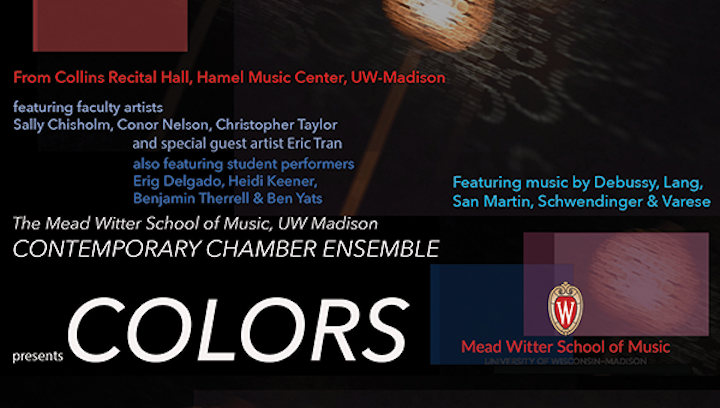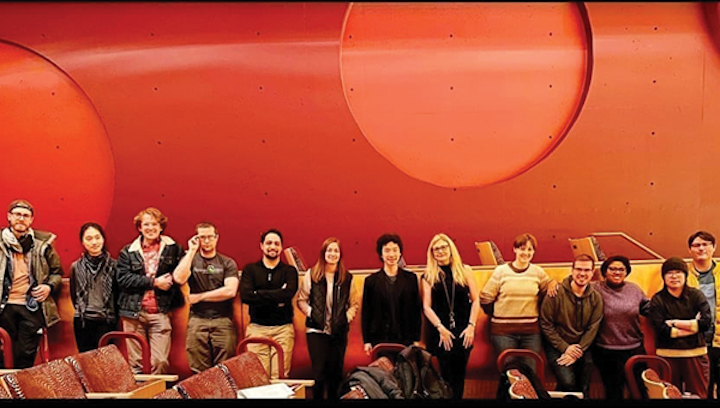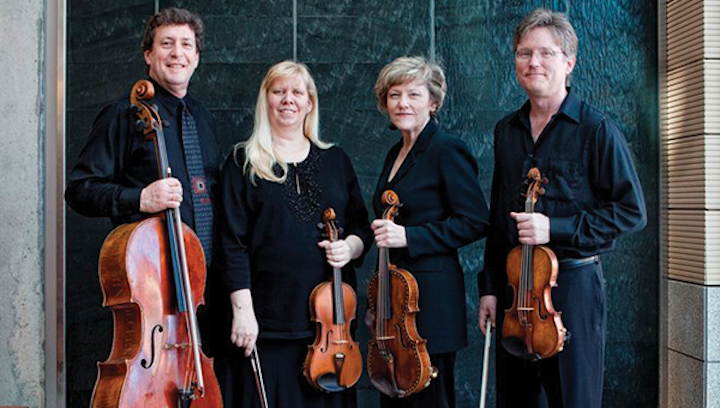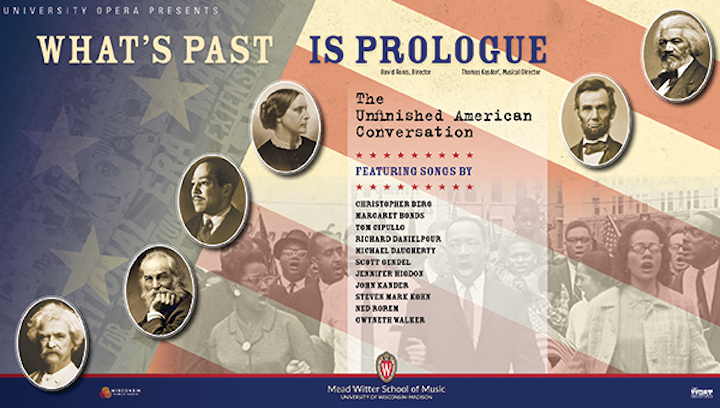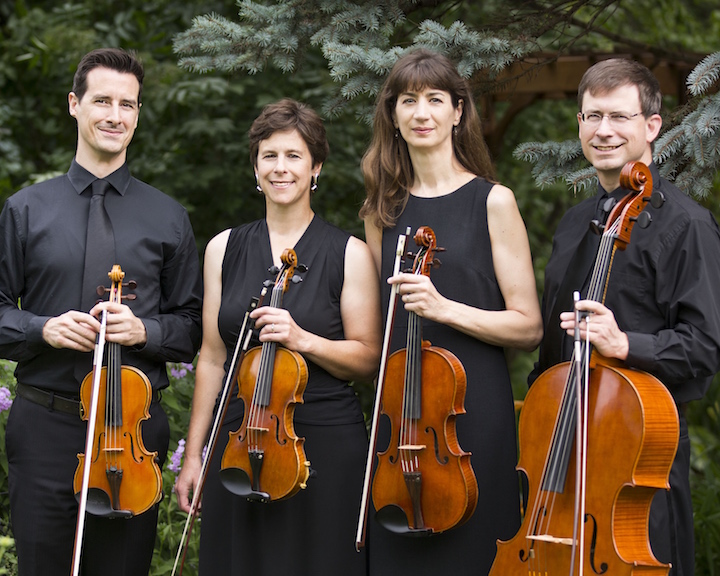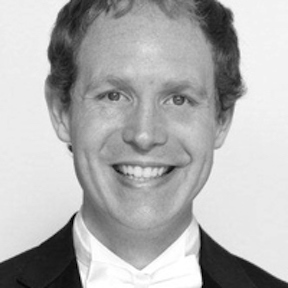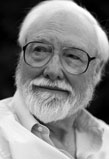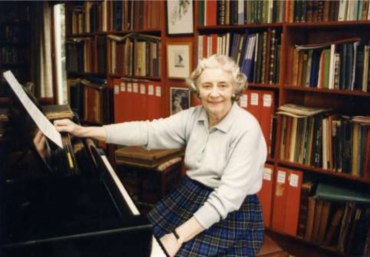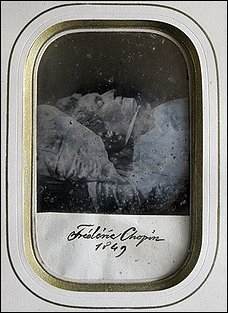The Well-Tempered Ear
The third LunART Festival celebrates Black women in the arts with FREE streaming concerts and events this Saturday night, Oct. 10, and next Saturday night, Oct. 17
Leave a Comment
PLEASE HELP THE EAR. IF YOU LIKE A CERTAIN BLOG POST, SPREAD THE WORD. FORWARD A LINK TO IT OR, SHARE IT or TAG IT (not just “Like” it) ON FACEBOOK. Performers can use the extra exposure to draw potential audience members to an event. And you might even attract new readers and subscribers to the blog.
By Jacob Stockinger
The Ear has received the following announcement to post:
The LunART Festival is back for its third season, continuing its mission to support, inspire, promote and celebrate women in the arts, with a special presentation, “Human Family,” available via two FREE video livestreams on LunART’s website and Facebook page on Saturday, Oct. 10, and Saturday, Oct. 17, at 7 p.m. CDT.
The events will be co-hosted by LunART founder and flutist Iva Ugrcic (below top), and by vocalist and art administrator Deja Mason (below bottom).
In response to the most recent and ongoing racial inequality and in solidarity with the Black Lives Matter movement, LunART will present the “Human Family” virtual festival featuring art created by Black women.
These FREE streamed events will feature a palette of emerging and established artists drawn from Madison’s rich arts scene, while also celebrating those who have paved the way for generations to come.
Radical inclusivity has been part of LunART’s mission from its conception. While women have historically been underrepresented in the arts, we cannot deny that there are segments of women that have been doubly marginalized, including women of color, women in the LGBTQIA+ community, older women and women with disabilities.
Part of creating a more just, inclusive world means recognizing that even within the space of underrepresentation, there remain disparities.
Works from the past include Florence Price’s “Five Folksongs of Counterpoint” for string quartet (heard in the YouTube video at the bottom), which is deeply rooted in the African-American spiritual tradition; Margaret Bonds’ Spiritual Suite for solo piano, written in a neo-Romantic classical style infused by jazz harmonies and rhythms; Afro-American Suite for flute, cello and piano by Undine Smith Moore, based on authentic spiritual songs used to express and record everyday life of slaves in America.
Florence Price (below), Margaret Bonds and Undine Smith Moore all fought against both racial and gender discrimination throughout their lives. To be a woman composing classical music in the mid-20th century was unusual; to be a Black woman composer was even more so. And yet, these women forged ahead, making history and paving the way for the women who would follow them.
Along with these pioneers of the past, LunART will also celebrate contemporary Black women who are making a big impact in the world of arts, culture, advocacy and activism, following the footsteps of their predecessors.
“Voodoo Dolls” for string quartet by Jessie Montgomery (below in a photo by Jiyang Chen) is influenced by West African drumming patterns that are interwoven with lyrical motifs in the improvisatory style.
“Fanmi Imen,” a work for flute and piano by Valerie Coleman (below) — LunART’s 2019 Composer-in-Residence) — is based on a powerful poem by Maya Angelou, “Human Family.” Angelou calls for peace and unity, while acknowledging differences due to ethnic and cultural background in her famous refrain: “we are more alike, my friends, than we are unalike.”
The chamber music will be performed by Madison’s finest musicians: Isabella Lippi, Karl Lavine, Peter Miliczky, Magdalena Sas, Marie Pauls, Satoko Hayami, Yana Avedyan and Iva Ugrcic.
Celebrating women’s creativity across many art forms has been a core component of LunART’s artistic mission from its inception, and this year is no exception. While music will create a sound painting, “Human Family” will also feature women who use words and movement to tell their story.
Enter a world of phenomenal talent with emerging singer-songwriters Danielle Crim and Akornefa Akyea performing their most recent original songs; magically moving poems and spoken-word pieces by Jamie Dawson and Shasparay Lighteard; and join dancer and choreographer Kimi Evelyn in self-exploration of what happens when the body and the soul are left in complete solitude through her powerful piece “Body, Sweet Home.”
To commemorate the Festival events, LunART has commissioned digital artwork (below) by local artist and activist Amira Caire, which is inspired by the “Human Family” concept. This stunning piece of art will be available for purchase in printed form on LunART’s website.
We are calling our community to eat local, drink local and support local. By supporting LunART, you are also supporting local nonprofits and small businesses.
This project would not be possible without the generosity of Madison’s creative media agency Microtone Media, The Piano Gal Shop from Sun Prairie, Dane Arts and a grant from the Madison Arts Commission at https://www.cityofmadison.com/dpced/planning/madison-arts-commission/1580/, with the additional funds from the Wisconsin Arts Board.
Events are free and available for anyone to watch online, and donations are welcomed. For more details about the artists, events, programs and links, and donation methods, please visit https://www.lunartfestival.org
Tags: #20thCentury, #African-AmericanMusic, #ArtsScene, #ArttForm, #BlackComposer, #BlackLivesMatter, #BlackWomen, #BlogPost, #BlogPosting, #ChamberMusic, #CityofMadison, #ClassicalStyle, #ClassiclaMusic, #Composer-in-Residence, #ContemporaryComposers, #CoronavirusPandemic, #COVID-19, #DaneArts, #DejaMason, #DigitalMedia, #DisabilityRights, #EmergingArtist, #EstablishedArtist, #EthnicDiversity, #EverydayLife, #FacebookPost, #FacebookPosting, #FlorencePrice, #folksongs, #HomeWebsite, #HumanFamily, #ImaniWinds, #IsabellaLippi, #IvaUgrcic, #JacobStockinger, #JessieMontgomery, #LGBTQrights, #LGBTRights, #LiveStreaming, #LivingComposer, #LunARTFestival, #LyricalMusic, #MadisonArtsCommission, #MadisonWisconsin, #MargaretBonds, #MariePauls, #MayaAngelou, #MicrotoneMedia, #MusicalStyle, #NewMusic, #NonprofitOrganization, #OnlineConcert, #PeterMiliczky, #RacialInequality, #SatokoHayami, #Shostkovich, #SmallBusiness, #SongWriter, #SoundPainting, #SpokenWord, #StateOfWisconsin, #StringQuartet, #SunPrairie, #SunPrairieWisconsin, #TheEar, #ThePianoGalShop, #TheU.S., #UndineSmithMoore, #ValerieColeman, #VirtualConcert, #VirtualFestival, #VocalMusic, #VoodooDolls, #WestAfrica, #WindMusic, #WisconsinArtsBoard, #WomenofColor, #YanaAvedyan, #YouTubevideo, 20th-century, 20th-century classical music, 20th-century music, acknowledge, Activism, activist, administrator, advocacy, Africa, African, African American, agency, America, art form, artists, Arts, artwork, audience, authentic, available, based, black, Black Lives Matter, Black women, BLM, blog, body, call, celebrate, cellist, Cello, Chamber music, choreographer, Classical, Classical music, commemorate, community, component, compose, composer, conception, Concert, contemporary, continue, core, coronavirus, counterpoint, create, creativity, culture, dance, dancer, Dane Arts, Deja Mason, difference, digital, disability, discrimination, disparity, doll, donation, doubly, drink, drumming, eat, emerging, established, ethnic, event, events, everyday, exploration, express, Facebook, feature, festival, Florence Price, flute, flutist, forward, friend, gender, generation, generosity, harmony, historically, History, home website, host, human family, Imani Winds, impact, improvisation, improvistory, inception, inclusive, inclusivity, inequality, influence, infuse, inspire, interwoven, Isabella Lippi, Iva Ugrcic, Jacob Stockinger, Jazz, Jessie Montgomery, just, Karl Lavine, KarlLavine, LGBT, LGBTQ, life, like, link, lives, livestream, Living composer, local, LunART Festival, lyrical, Madison, Madison Arts Commission, Magdalena Sas, make, Margaret Bonds, marginalized, Marie Pauls, Maya Angelou, media, method, Microtone Media, mission, motif, movement, Music, musical, Musician, neo-Romantic, New Music, nonprofit, older, ongoing, online, original, page, painting, palette, pandemic, patterns, peace, performer, Peter Miliczky, Pianist, Piano, piece, pioneer, poem, post, posting, powerful, predecessor, presentation, program, project, promote, race, racial, racial inequality, radical, recent, record, refrain, response, rhythm, Satoko Hayami, Saturday, scene, Season, segments, self, share, singer, Singing, slavery, slaves, small business, solidarity, solitude, solo, song, soul, Sound, sound painting, space, special, spiritual, spoken word, State of Wisconsin, story, stream, String quartet, style, Suite, Sun Prairie, support, tag, talent, tell, The Ear, The Piano Gal Shop, tradition, U.S., underrepresented, Undine Smith Morre, United States, unity, unusual, use, VALERIE COLEMAN, Viola, Violin, violinist, violist, virtual, virtual festival, vocal music, vocalist, Voodoo, Voodoo Dolls, Website, West Africa, wind music, Wisconsin, Wisconsin Arts Board, women, women of color, words, works, world, Yana Avedyan, year, YouTube
Classical music: You must hear this – how Debussy provided a soft way to end a season
2 Comments
By Jacob Stockinger
It seems perfectly normal and natural that big groups like to close their season with a big ending.
So the Madison Symphony Orchestra closed this past season with the “Glagolitic Mass” by Leos Janacek, which used a lot of brass and a large choir.
The Wisconsin Chamber Orchestra went for an all-Beethoven program that featured the Piano Concerto No. 3, with soloist John O’Conor, and the forceful, driven Fifth Symphony.
Yet there was something particularly soothing and reassuring about the way the Ancora String Quartet (below) closed its 17th season last Friday night. (Member, below from left, are Wes Luke and Robin Ryan, violins; Benjamin Whitcomb, cello; and Marika Fischer Hoyt, viola.
The group opened with a welcome rarity: the fourth and final string quartet by Danish composer Carl Nielsen. It proved a fine offering, especially noteworthy for the hymn-like slow movement that brought to mind the open harmonies of Aaron Copland.
But the concert ended ever so quietly and warmly with the only String Quartet, Op. 10, written by French composer Claude Debussy (below).
The poet T.S. Eliot said the world ends not with a bang but a whimper.
But this ending was neither bang nor whimper.
The Ear would call it a sigh, a long and sensual sound bath that left you leaving the performance less with admiration or wonder than with gratitude for the group and for the music.
Plus, it was all the more affecting for the way that violinist Wes Luke (below) clearly explained how the main themes of all movements grow out of one motif and cohere.
The Debussy string quartet, he explained, is one of the most performed and recorded of the entire string quartet repertory. Yet its sensuality always makes it seems so fresh and so French.
The highlight was, as always, the third movement, the slow movement. And as the spring season completes winding down and the summer seasons starts to pick up, here it is for your enjoyment in a YouTube video of the Juilliard String Quartet.
What did you think about the season-closing concerts this spring? Did you have a favorite?
What do you think of the Debussy string quartet?
If you know of a better slow movement from a string quartet, please leave a COMMENT and a link, if possible, to a YouTube performance.
Tags: #AaronCopland, #AncoraStringQuartet, #BrassMusic, #CarlNielsen, #ClaudeDebussy, #FifthSymphony, #FrenchMusic, #GlagoliticMass, #JohnO'Conor, #JuilliardSchool, #JuilliardStringQuartet, #LeosJanacek, #LudwigVanBeethoven, #MadisonSymphonyChorus, #MadisonSymphonyOrchestra, #PianoConcerto, #StringQuartet, #WisconsinChamberOrchestra, admiration, Arts, bang, Beethoven, big, Cello, Chamber music, choral music, Classical music, Claude Debussy, close, cohere, composer, end, ending, French, gratitude, harmony, hymn, Jacob Stockinger, Ludwig van Beethoven, Madison, Madison Symphony Orchestra, motif, movement, Music, Orchestra, poet, Poetry, quiet, Season, sensual, sensuality, slow, T.S. Eliot, theme, United States, University of Wisconsin-Madison School of Music, University of Wisconsin–Madison, Viola, Violin, vocal music, whimper, Wisconsin, Wisconsin Chamber Orchestra, wonder, YouTube
Classical music: The Ancora String Quartet turns in outstanding performances of Beethoven and Shostakovich, and revives a neglected quartet by Danish composer Niels Gade
3 Comments
By Jacob Stockinger
Here is a special posting, a review written by frequent guest critic and writer for this blog, John W. Barker. Barker (below) is an emeritus professor of Medieval history at the University of Wisconsin-Madison. He also is a well-known classical music critic who writes for Isthmus and the American Record Guide, and who hosts an early music radio show once a month on Sunday morning on WORT FM 89.9 FM. For years, he served on the Board of Advisors for the Madison Early Music Festival and frequently gives pre-concert lectures in Madison. He also took the performance photos for this review.
By John W. Barker
Whether as a finale to the passing season or as a prelude to the upcoming one, the Ancora String Quartet (below) favored its admirers with a fine summer concert at St. Andrew’s Episcopal Church on Regent Street last Saturday night.
The program offered three contrasting works.
It started off boldly with Dmitri Shostakovich’s Quartet No. 7 in F-sharp minor, Op. 108, a slashing three-movement work of nervous and disturbing energy.
So many of the quartets by Shostakovich (below) are autobiographical, or at least confessional, in character, and this one is a clear expression of both personal anxieties and political apprehensions. The Ancoras tore into it with gusto.
Niels W. Gade (below) is hardly a composer of instant recognizability, but he was at the center of Leipzig’s post-Mendelssohn world and then, when he returned to his native Denmark, he became the dominant figure in its musical life until his death in 1890. This is the bicentennial year of his birth.
Gade has left us some fine orchestral music that deserves frequent hearings. And his true legacy was his advancement — if with reservations — of his prize student, Carl Nielsen.
Gade’s late String Quartet in D, Op. 63, one of his three works in the form, is steeped in the stylistic qualities of Felix Mendelssohn and Robert Schumann, without quite extending them. Still, it is altogether a listenable work, and we can thank the Ancora players for sharing with us.
The big event, however, was the concluding piece, Beethoven’s Quartet in F Major, Op. 18, No. 1, part of his set of six that marked his brilliant debut as a composer in this form.
Meant to show his extension of the work of Haydn and Mozart in this idiom, this quartet was worked on laboriously by Beethoven, to offer a kaleidoscopic array of moods and structures.
The first movement in particular is a proclamation of his lifelong skill in creating bold entities out of the most minimal motivic material, while the third and fourth movements are hectic displays of energy and imagination.
Perhaps most striking, however, is the slow movement, supposedly reflecting Shakespearian influences. Wonderfully vigorous in all movements, the Ancoras were particularly eloquent in that dark and tragic essay that looks to the tomb scene in “Romeo and Juliet.” (You can hear the slow second movement, played by the Takacs Quartet, which will perform next season at the Wisconsin Union Theater, in the YouTube video at the bottom.)
It has become the custom with this group for one member to give a brief spoken introduction to each composition, and that practice worked particularly well for this program, giving the audience a comfortable sense of welcome and valuably pointing up things to listen for. (Below is violist Marika Fischer Hoyt explaining and deconstructing the Beethoven quartet.)
If you missed the concert, the Ancora String Quartet will repeat the program this coming Sunday afternoon at 12:30 p.m. for the “Afternoon Live at the Chazen” program. You can attend the concert in Brittingham Gallery 3 of the Chazen Museum of Art for FREE or live-stream it from the Chazen website.
Here is a link to the website with more information and a portal for streaming:
https://www.chazen.wisc.edu/visit/programs/#section6
Tags: American Record Guide, Ancora String Quartet, anxiety, Arts, autobiographical, autobiography, Beethoven, Carl Nielsen, Cello, Chamber music, Chazen Museum of Art, Classical music, Concert, confession, confessional, critic, Danish, dark, death, Denmark, disturbing, Early music, energy, Episcopal, essay, expression, finale, Haydn, History, Isthmus, Jacob Stockinger, lecture, legacy, Leipzig, livestream, Ludwig van Beethoven, Madison, Madison Early Music Festival, material, Medieval, Mendelssohn, mood, motif, motive, motivic, Mozart, Music, nervous, Niels Gade, photo, photograph, Politics, portal, Prelude, Radio, retire, Retirement, Romeo and Juliet, Schumann, Season, Shakespeare, Shostakovich, skill, St. Andrew's, stream, String quartet, structure, Student, style, summer, Sunday Afternoon Live at the Chazen, symphony, Takacs Quartet, tomb, tragedy, United States, University of Wisconsin-Madison School of Music, University of Wisconsin–Madison, Viola, Violin, Website, Wisconsin, Wolfgang Amadeus Mozart, WORT-FM 89.9, YouTube
Classical music: Pianist Adam Neiman defines what makes for great Chopin playing. He performs an all-Chopin recital this Sunday afternoon at Farley’s House of Pianos.
Leave a Comment
By Jacob Stockinger
What makes for great Chopin playing?
It is an especially germane question since the critically acclaimed pianist Adam Neiman (below) will perform an all-Chopin recital this coming Sunday at 4 p.m. at Farley’s House of Pianos, 6522 Seybold Road, on Madison’s far west side near West Towne Mall.
Tickets are $45. For more information, go to:
http://salonpianoseries.org/concerts.html
Neiman –pronounced KNEE-man — has appeared here as a soloist with the Wisconsin Chamber Orchestra and recorded piano concertos by Mozart with the WCO. He is a critically acclaimed prize-winning pianist with a major concertizing and recording career. He also teaches at Roosevelt University in Chicago and is a member of the Trio Solisti, a piano trio that has been hailed as the successor to the famous Beaux Arts Trio.
Here is a link to Neiman’s website with information about him and his recordings, including upcoming releases of Beethoven, Liszt and Rachmaninoff:
Adam Neiman also recently did an email Q&A interview with The Ear:
There are some exceptional players of Beethoven and other German composers who sound completely out of their element in Chopin. What qualities do you think make for great Chopin playing and what makes Chopin difficult to interpret?
Chopin’s music incorporates a narrative language and an emphasis on very “first person” points-of-view; in other words, it is highly personalized, expressing emotion from the perspective of the individual, including nationalistic sentiments. Often, Germanic music aims for “objective” viewpoints, with extremely stringent instructions by the composer.
For players who struggle with the open-ended idiomatic flavor in Chopin’s music, the lack of objective instruction by the composer can make it difficult for them to know what to do. (You can hear Adam Neiman discussing much more about Chopin’s personality and artistic achievement in the YouTube video at the bottom)
To play Chopin (below) at a very high level requires imagination and freedom, as well as a poetic and introspective musical tendency. The fluidity of rubato, the contrapuntal interaction between the hands and the frequent use of widely spread textures requires a nimble master of the instrument, one with the ability to emphasize the piano’s specific virtuosic abilities.
In addition, Chopin’s music is centered around a bel canto operatic style of melody, whereas Germanic melody tends to be more motivic in nature, and therefore developmental.
A composer like Beethoven will emphasize motivic metamorphosis as a means of augmenting a form to create large structures, whereas Chopin will glide from one melodic area to another, using harmonic exploration as the central means of formal expansion.
This compositional difference outlines different strengths in the pianists, as the skill set to play reams of melody lines in succession can often be very different from those skills required to highlight motivic development in a work.
Can you place the 24 Preludes that you will be playing within the context of Chopin’s entire body of works. What would you like the public to know about the preludes and how you see them individually and as a group?
The 24 Preludes were composed while Chopin was on holiday in Mallorca, Spain, which proved to be Chopin’s first palpable bout with tuberculosis, the disease that eventually killed him. (Below is an 1849 photo of Chopin on his deathbed.)
Many of these works were written in a fever-state, in haste, and during a stressful time period in which Chopin was not only facing his own mortality, but also dealing with the myriad challenges of integrating with the children of his lover, the French writer Aurora Dudevant who is better known as George Sand.
These Preludes are like snapshots into the mind of the composer at a moment in time, often without regard for cohesion or development. They exist in a timeless place, where the music expresses the extremely personal sentiments roiling through Chopin’s consciousness.
In many ways, these works capture his spirit in the most distilled possible way, giving the player and listener an opportunity to view the mind and heart of Chopin without filter or refinement, hallmarks of his larger works.
Despite the widely varied emotional content of these Preludes, as a set they hold together as a marvelous and surprisingly cogent musical journey. They exemplify the 19th-century “Romantic” ideals of fantasy, freedom, individuality and raw emotion.
You will also perform all four Ballades. How they do they rank within Chopin’s output? What would you like listeners to know about each of the four ballades, about what they share in common and what distinguishes each one? Do you have favorites and why?
If the Preludes represent the pinnacle of Chopin’s ability to express poetic ideals within miniature forms, the Ballades represent the apex of his more grandiose musical philosophy.
The Ballade, as a form, emanates from epic poetry, often portraying a heroic protagonist overcoming seemingly inescapable challenges. Ballades can also be tied to nationalistic notions, and for Chopin, all four Ballades are truly Polish in their expression.
As Chopin’s native Poland was invaded and he was cut off permanently from re-entry, Chopin became an orphan of the world, whose adopted home of France revered and celebrated him without equal.
His musical mission — exemplified by the Ballades, Mazurkas and Polonaises in particular — was to heighten awareness of Poland’s cultural contributions to a European audience totally unaware of the goings-on in the east.
As a result of the immense conflicts suffered by Chopin’s homeland, and in keeping with the deep pride and identification Chopin felt as a Pole, these Ballades express the emotional rollercoaster of a lone Polish hero — perhaps Chopin himself, autobiographically — battling the world.
All four of these works make an enormous impression on the listener. From the despair and anger of the first Ballade, the bi-polar conflicts of the second (below is the opening of the second Ballade in Chopin’s manuscript), the pastoral hopefulness of the third, and the desolate introspection of the fourth, these Ballades speak to the soul and require the most intensely personal voice of the performer.
They require the possession of immense physical power and emotional maturity, which renders these works as being among Chopin’s most challenging.
I love all four of them equally. They are true masterworks of the highest order.
In there anything else you would like to say?
I am deeply honored and extremely delighted to return to Madison to perform this recital. I look forward to seeing many familiar faces, as well as new friends. Thank you!
Tags: Adam Neiman, Arts, Bach, Ballade, Beethoven, Chamber music, Chopin, Classical music, Compact Disc, composer, Composition, death, emotion, epic, fantasy, France, freedom, French, George Sand, Germanic, Germany, harmony, hero, homeland, ideal, imagination, individuality, interview, Jacob Stockinger, journey, Liszt, lover, Madison, Mallorca, manuscript, mazurka, melody, mortality, motif, Music, nationalism, nationalistic, nocturne, patriotism, performer, personal, Pianist, Piano, Piano Trio, poem, Poetry, Poland, Polish, polonaise, Prelude, Q&A, Rachmaninoff, recital, Romantic, rubato, Sonata, Spain, structure, Trio Solisti, United States, University of Wisconsin-Madison School of Music, University of Wisconsin–Madison, Waltz, Website, Wisconsin Chamber Orchestra, Writer, YouTube
Classical music: Jazz and classical music are closely related and work well together, says composer Daniel Schnyder. He discusses “Charlie Parker’s Yardbird,” which the Madison Opera stages in its Midwest premiere this FRIDAY night — NOT Saturday — and Sunday afternoon
7 Comments
By Jacob Stockinger
Jazz and classical music are not so different, says Swiss-born composer Daniel Schnyder.
For Schnyder, it is more than an academic matter. He puts his point of view into action in his acclaimed chamber opera “Charlie Parker’s Yardbird,” which deals with the life of the bebop saxophone player and jazz giant. (You can see the YouTube trailer for the productions by Opera Philadelphia and the Apollo Theater in Harlem at the bottom.)
The Madison Opera will offer the work’s Midwest premiere when it stages the chamber opera this Friday night (NOT Saturday night, as first mistakenly posted here) at 8 p.m. and Sunday afternoon at 2:30 p.m. Both performances are in the Capitol Theater of the Overture Center. (Performances photos below are from the world premiere at Opera Philadelphia.)
Here is a link to more general information about the opera, tickets, the cast and the production:
Daniel Schnyder (below) — who will perform a FREE concert of the music of Charlie Parker and do a question-and-answer session on this Thursday night at 7:30 p.m. (NOT 7 p.m. as mistakenly first stated here) in Morphy Hall on the UW-Madison campus — also agreed to an email interview with The Ear:
What was the work’s genesis and what gave you the idea for “Charlie Parker’s Yardbird”? Are you a big jazz fan and did you see the work as a way to meld the jazz and classical styles of music?
I am a jazz fan. I am also a jazz musician and I love to compose, play and improvise in the jazz idiom. I have recorded more than 30 jazz CDs.
I love to combine jazz and classical music. I just finished a symphony for orchestra and big band, a commission by the Temple University in Philadelphia.
I do not see classical music and jazz as two completely different things. Jazz is by nature a synthesis of European music influences and African music.
The idea from the very beginning was to write an opera for Lawrence Brownlee, the great African-American tenor. Opera Philadelphia asked me to write a work for him and we tried several libretto options. After hearing a recital by Larry singing gospel songs, I came up with the idea to write an opera about Charlie Parker’s life.
How would you describe the musical style of the opera in terms of tonality and melody, and its accessibility to the general public? What were the audience reactions in Philadelphia and New York City?
In both places, the audiences were very moved by the story and the music. The topic hit a nerve, something our society has to reflect upon, a general issue that concerns us all as a nation.
The music itself is not hard to listen to and moves swiftly. For the orchestra and singers, the opera is rather challenging, since Charlie Parker (below) was a virtuoso. The music moves fast and often in off-beat rhythms that are unusual for classical musicians. There are also a lot of odd meters and tricky patterns that sometimes connect to Parker’s music and sometimes relate to the music that came after him.
The audience will have a ball. There are 12-tone music passages reflecting on new music and opera — mostly in Nica’s parts — but there are a lot of R&B influences and jazz and Latin music grooves.
It would be false to see the opera as a patchwork of different musical sequences and styles. It is my music that is based on all these influences. The opera can be described as a modern music carpet with lots of colors of today’s music, rather than a quilt.
In what ways do you see the characters and the story as offering lessons and being relevant to today?
I guess this is obvious: Our society has to understand that different cultures and different ethnic backgrounds enrich America and are fundamental to its culture and success.
If we go down the path of segregation, divisiveness and disrespect, we all will lose. Jazz is the great coming together of different heritages, the roots of America, and it conquered the world.
We still erect barriers in society and music that are detrimental to growth and innovation. Other contemporary issues are also important in the opera, such as being a single parent, drug addiction and faith.
The opera also highlights that jazz musicians at the time could not earn money from recorded music, something that is true again today. The stealing of royalties from Parker and Dizzie Gillespie were different from today’s issues of streaming, but the problem of jazz musicians not receiving money for their creative works stays the same.
In the opera, Parker discusses the very nature of music, its volatility and the fact that you cannot physically possess it. This is one of the reasons why he wants to write the music down on paper. He wants to make it abstract, but realizes that he loses some of the essence of what he wants to say. That is the dilemma of the composer.
He also reflects on the notation system, which was not designed for jazz. He sings: “How can I put down these black dots on white paper, how can I capture these sheets of sound?”
The opera reflects on American history, but it simultaneously relates to today’s world. This is not just some nice story about the past; it is about us.
Quite a few other productions have been planned. What do you think explains the work’s popularity? Do you think it attracts new audiences to opera?
There might be many different reasons for that:
1) There are very few operas using the modern jazz idiom.
2) There are very few operas in which the leading roles are African-American.
3) The opera is flexible; it can be produced with a moderate budget in a lot of different venues. It is mobile, which is similar to L’Histoire du Soldat (The Soldier’s Tale) by Igor Stravinsky. It also has a length of just over 100 minutes.
4) As mentioned above, the opera hits a nerve; it is about our time and about us.
5) Charlie Parker is a legend, but very few people really know about him and his music. People are intrigued.
6) The music is very accessible; it can be played on the radio without getting boring or incomprehensible. Some modern operas rely a lot on light, staging and special visual effects. This opera works more like Carmen or a Verdi opera, told through the music.
7) It is an opera, not a musical. It only uses a song format in a few instances. The opera is composed in an open and evolving format, connected by leitmotifs similar to Wagner’s operas.
The music definitely has a lot of jazz influences, but the format is mostly one not used in jazz music. That creates a new experience. It does not fit into one of the known “drawers” of music, so it can be tempting to try to compare it to their pieces but it sticks out as musically different.
8) The opera is composed very close to the sound and rhythms of the words. Hence you can understand a lot. The language is very direct and clear, close to spoken language. That helps. You can actually understand a lot of the lyrics without reading the supertitles.
I tried to avoid the Strauss or Wagner effect of creating something where the mix of complex language and complex music creates something beautiful but often incomprehensible. French and Italian operas are better in this regard. “Yardbird” has a message that needs to be understood.
9) There are many riddles in the opera – musical riddles, but also hidden messages and references in the text – that can be explored. The opera plays in a twilight zone between death and life. This is also intriguing.
Is there something else you would like to say about yourself and the opera?
I enjoyed writing the opera very much. It was a great pleasure and an honor to reflect on one of the great music geniuses in American history.
Tags: 12-tone, addiction, Africa, African, African American, American history, Apollo Theater, Arts, audience, band, bebop, big band, Carmen, Charlie Parker, Charlie Parker's Yardbird, Classical music, commission, Compact Disc, compose, composer, Daniel Schnyder, death, Dizzy Gillespie, drugs, email, ethnic, Europe, European, faith, France, French, genius, gospel, Harlem, heritage, History, improvise, interview, Italian, Italy, Jacob Stockinger, Jazz, John DeMain, L'histoire du soldat, language, Latin, legend, leitmotif, life, light, lyrics, Madison, Madison Opera, Madison Symphony Orchestra, melody, meter, Midwest, modern, motif, Music, musical, New Music, New York City, notation, Opera Philadelphia, Overture Center, Philadelphia, play, pleasure, premiere, Q&A, question-and-answer, quilt, R&B, racism, recital, rhythm, riddle, roots, Saxophone, segregation, sing, single parent, society, song, staging, story, Strauss, Stravinsky, streaming, supertitle, Temple University, tenor, tonal, twilight zone, United States, University of Wisconsin-Madison School of Music, University of Wisconsin–Madison, Verdi, visual, visual effects, vocal music, Wagner, words, world, YouTube
